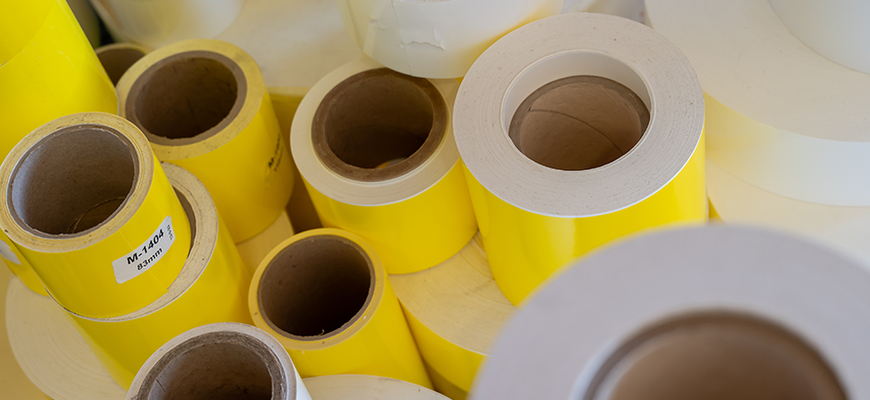Tips & tricks from our label experts

How to select a label material
Not all label materials are created equal. Therefore, it is important to answer several questions before selecting a specific material. This ensures that the label material meets your requirements and expectations.
- What is the intended application for the labels?
- What are the desired dimensions of the labels? /li>
- How many labels do you require annually?
- What is the primary requirement the material must fulfil? Consider properties such as heat resistance, weather-proof, water-proof, chemical resistance, resistance to oil, grease, UV exposure, and extreme temperatures (both high and low).
- What is the desired lifespan of the labels?
- Should the print on the labels be long-term scratch-resistant?
- Are there specific industry standards or guidelines the material must comply with, such as REACH or RoHS?
Testing label materials
We always recommend testing any label material under real-world conditions before placing an order. This allows you to determine whether the material meets your requirements and any industry-specific standards. Some practical tips:
- Clean the surface to which you will be applying the label. The surface needs to be free of grease, oil, dust, dirt, and moisture to ensure optimal adhesion.
- Avoid touching the label adhesive as much as possible.
- Apply the label and press it firmly to activate the adhesive. For larger labels, use a squeegee to ensure proper adhesion across the entire surface.
How long can I store labels?
Each label material has unique properties that affect its shelf life. Most label materials have a shelf life of approximately one year when stored below 27ºC with 50-60% relative humidity.
However, label materials with a thick, strong, yet relatively soft adhesive – such as M1008, M1101, and M1321 – may eventually experience bleeding over time. This can impact how the labels pass through the printer. Therefore, we recommend keeping no more than six months’ worth of stock for these materials. Feel free to ask us about the specifications for the material you require.
What is the best way to store label material?
We supply label materials on rolls. Always make sure to remove the rolls from the box and store them flat, preferably in a dark environment, so that the core faces upwards. Storing rolls on their side can cause the adhesive to flow due to gravity and the weight of the roll, which may negatively affect printing quality.
Storage conditions also play a crucial role. High temperatures cause the adhesive to soften, making it more prone to flowing (bleeding). We recommend storing rolls of labels in a cool place, away from direct sunlight and heat to maintain optimal label quality.
Cleaning before installation
Installing labels can be a time-consuming task, especially if you need to apply thousands of them. However, cleaning the surface beforehand often takes three times longer. Therefore, it comes as no surprise that the cleaning process is frequently skipped or not done thoroughly – and this is where problems often arise.
If you do not clean the surface properly, we can almost guarantee that you will need to order new labels within a few months and that would be a waste of your investment. Even the strongest adhesive will not stick to a dirty, greasy, or dusty surface. You can compare it to repainting an outdoor wooden fence. You would start by removing the old paint layer and clean the surface thoroughly before applying new paint. By cleaning the surface properly, you extend the lifespan of your labels.
Personal advice
Our advisors are ready to answer any question you may have about label materials, cleaning, and more. They can also provide free samples of label materials or help you purchase installation and cleaning tools, such as squeegees, industrial adhesive removers, and degreasers.
















